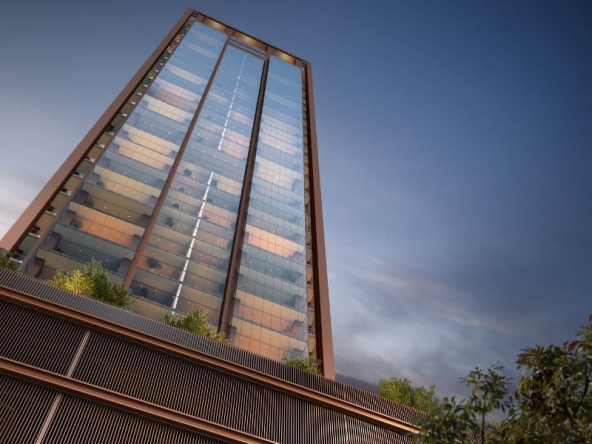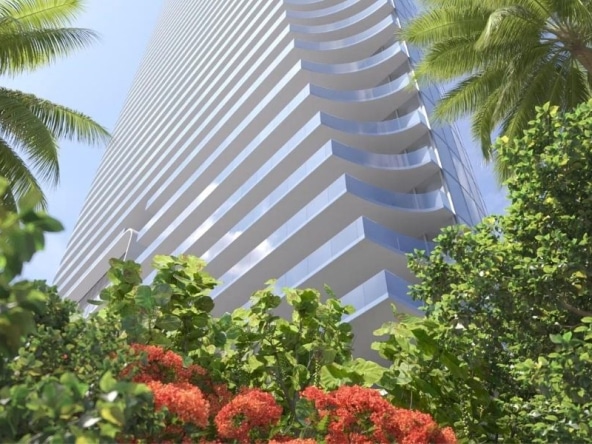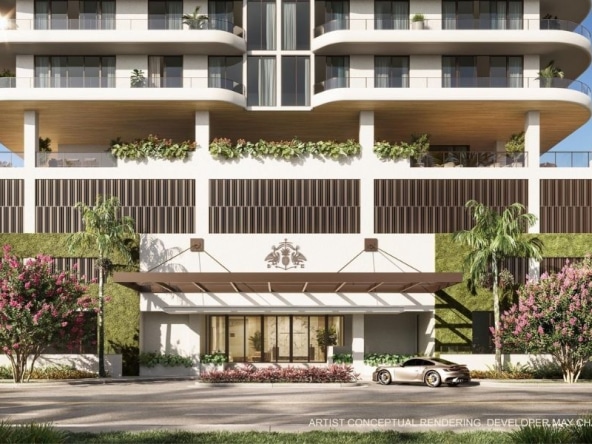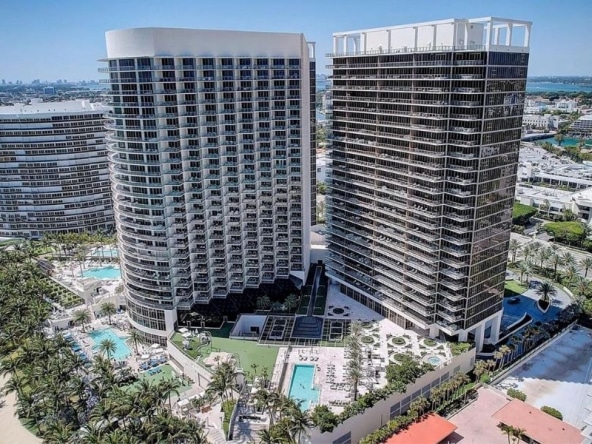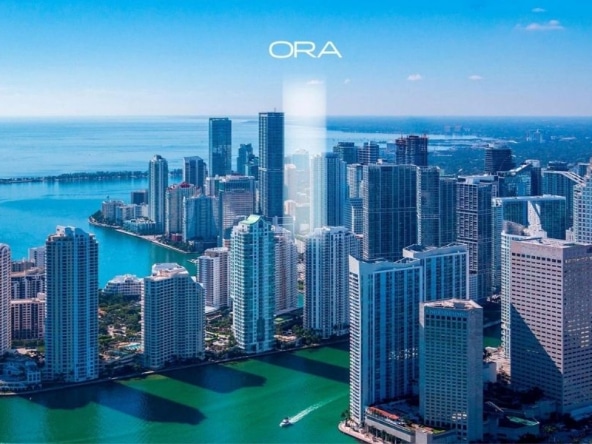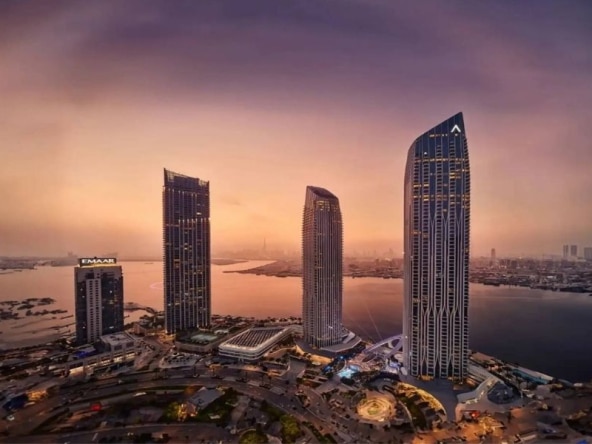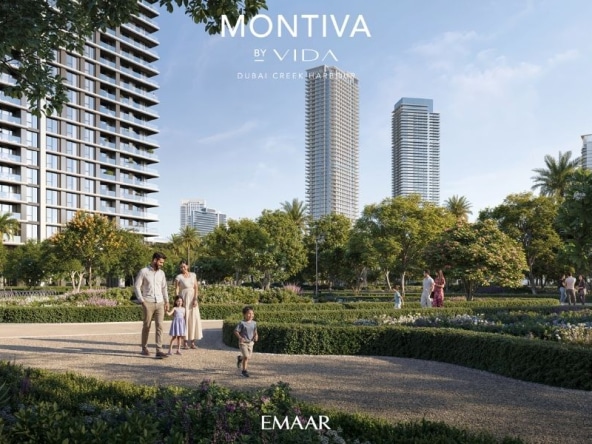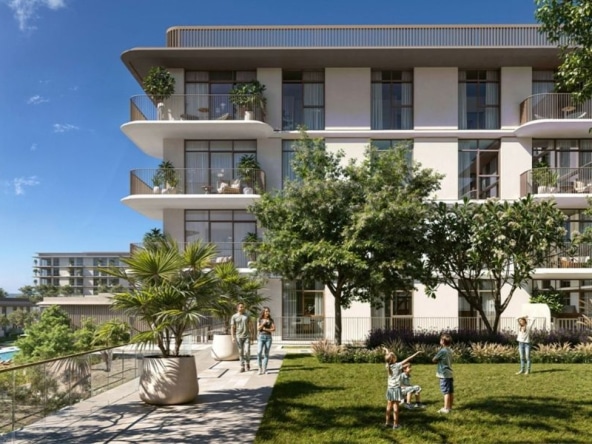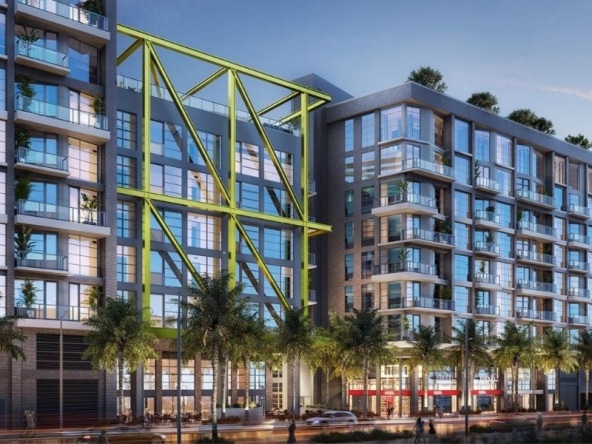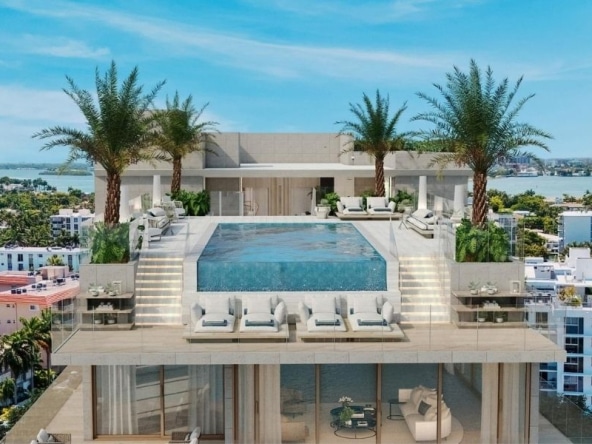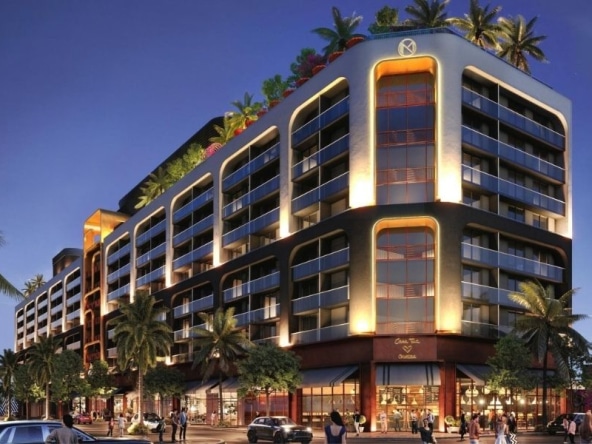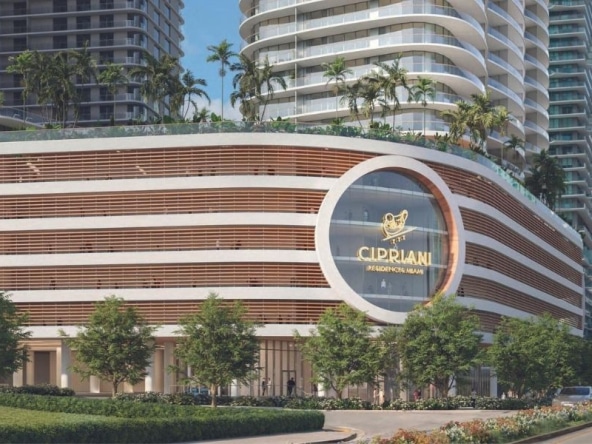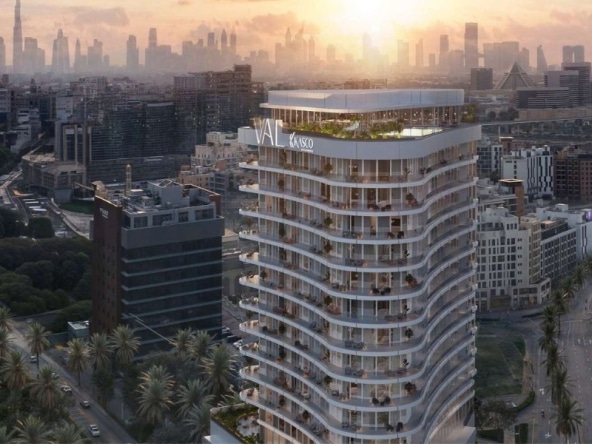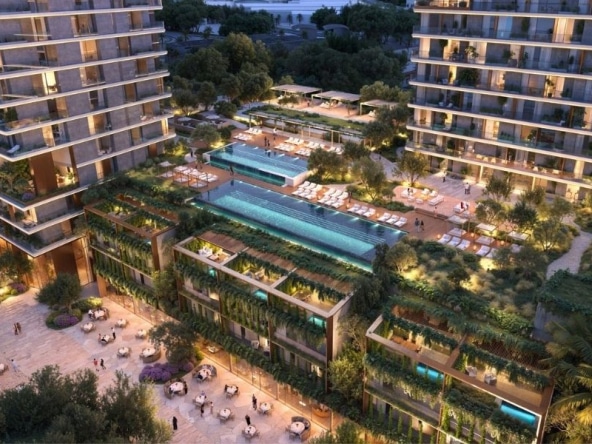Dubai Palm Island Home Prices
Dubai’s famous Palm Island (Palm Jumeirah) is an artificially constructed palm-shaped residential area on the Jumeirah coast. Attracting high-income investors from around the world, Palm Jumeirah is known for its ultra-luxury villas, spacious residential apartments, and five-star hotels located right on the waterfront. Property prices in the area reflect this prestige; for example, the price per square meter for Palm Jumeirah villas is approximately 32,734 AED (approximately 9,000 USD).
More
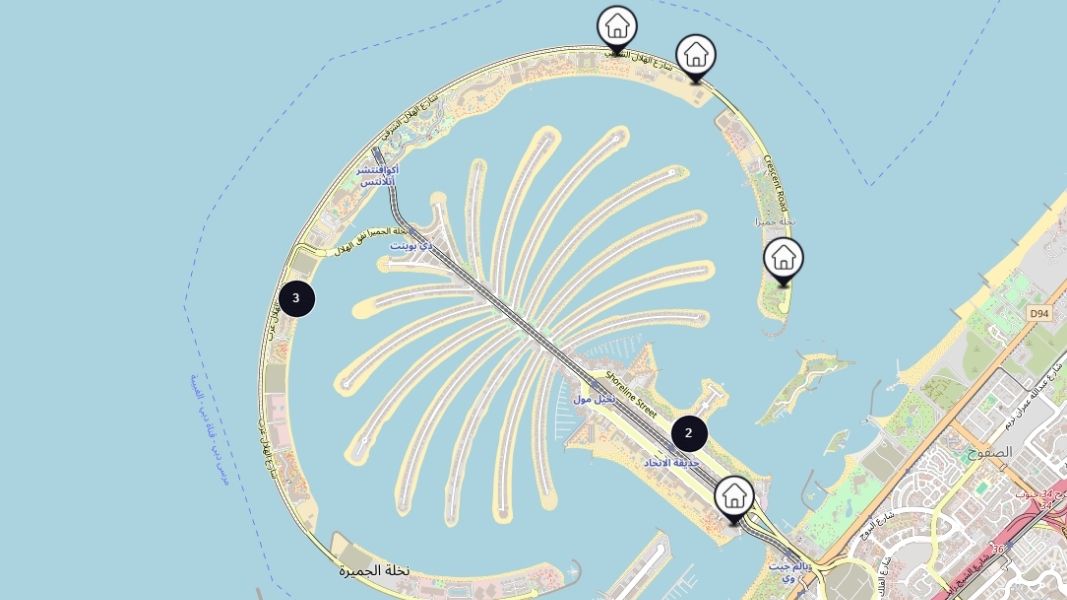 Dubai Palm Island Property Prices
Dubai Palm Island Property Prices
Homes for Sale on Dubai Palm Island
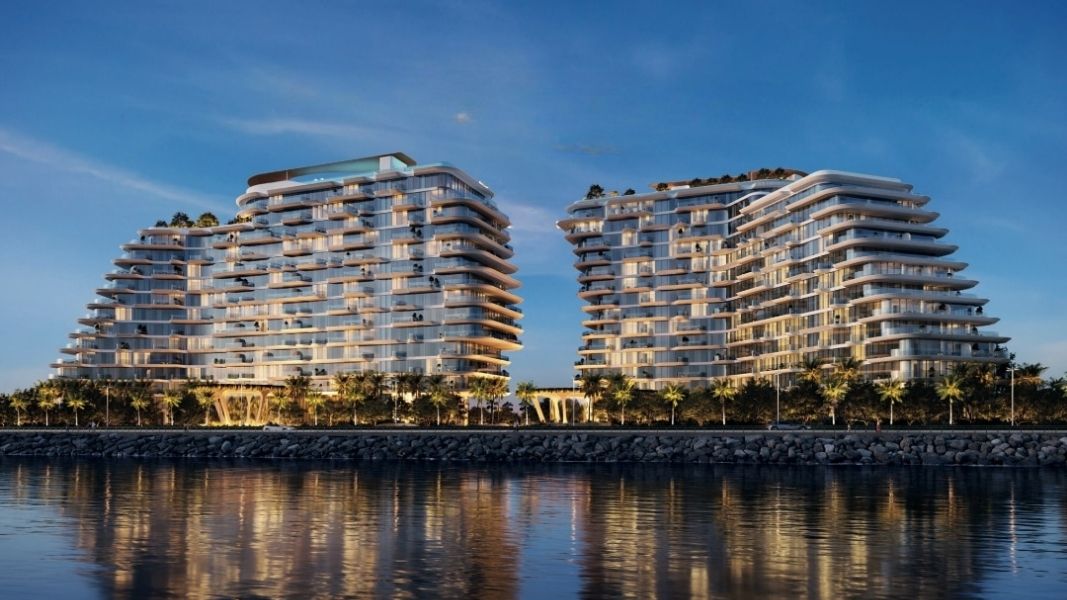 The range of properties for sale on Palm Jumeirah extends from ultra-luxury villas to branded residence apartments. The island stands out particularly with its beachfront villas (such as Signature Villas, Garden Homes, Twin Villas located on the fronds) and residence projects (including One at Palm, Shoreline, Azure, Ataşehir and other luxury apartment developments). According to listings, villa prices on Palm Jumeirah generally reach tens of millions of AED; some sources list the average villa sales price at approximately 60,270,000 AED. Meanwhile, smaller apartments or townhouse-style homes in the area can be comparatively more affordable. The island’s sea views, private beach access, fitness centers, and security services contribute significantly to these price differences.
The range of properties for sale on Palm Jumeirah extends from ultra-luxury villas to branded residence apartments. The island stands out particularly with its beachfront villas (such as Signature Villas, Garden Homes, Twin Villas located on the fronds) and residence projects (including One at Palm, Shoreline, Azure, Ataşehir and other luxury apartment developments). According to listings, villa prices on Palm Jumeirah generally reach tens of millions of AED; some sources list the average villa sales price at approximately 60,270,000 AED. Meanwhile, smaller apartments or townhouse-style homes in the area can be comparatively more affordable. The island’s sea views, private beach access, fitness centers, and security services contribute significantly to these price differences.
Dubai Palm Island Villa Listings
Villa listings on Palm Jumeirah usually appear on luxury real estate platforms and target high-net-worth investors. These listings typically feature 4+ bedroom villas with sea views, standalone mansions with large gardens, or properties with private pools. For example, a 15,000 sq. ft. villa on Frond G sold for 130 million AED in 2024. Additionally, Dubai Sotheby’s International Realty sold another villa on Palm Jumeirah this year for 161 million AED, marking one of the highest secondary market sales in the area.Dubai Palm Island Villa Prices
Villa prices on Palm Jumeirah vary widely depending on property type and location. Mid-segment villas typically range between 25–40 million AED, while large beachfront villas can exceed 100 million AED. For example, a 15,000 sq. ft. villa sold for 130 million AED in the second quarter of 2024, showcasing the upper-tier pricing. In another high-profile sale recorded by Dubai Sotheby’s, a villa sold for 161 million AED, illustrating the extreme top end of the market. Based on real estate data, the average villa sale price on Palm Jumeirah currently stands at approximately 35,981,250 AED; however, this average remains far below the prices of ultra-luxury properties.Price Ranges by Property Type
- Beachfront Villas: These villas located on the fronds are the most expensive homes on Palm Jumeirah. Typically featuring 4–6 bedrooms in large standalone homes, prices start at around 30 million AED and can exceed 100 million AED for ultra-luxury models.
- Luxury Apartments: Residences in projects such as One at Palm, Rixos The Palm, Azure, and Como Residences range between 20–60 million AED depending on size. For instance, 4-bedroom units at One at Palm Jumeirah average 53.6 million AED, while 3-bedroom units sell for around 26.3 million AED.
- Townhouses & Waterfront Communities: Smaller homes and townhouses in developments such as Azure Residences, Palm Views, or Shoreline Apartments sell for 15–30 million AED. These options often offer more modest sea views.
Luxury Residences & Beachfront Villa Alternatives
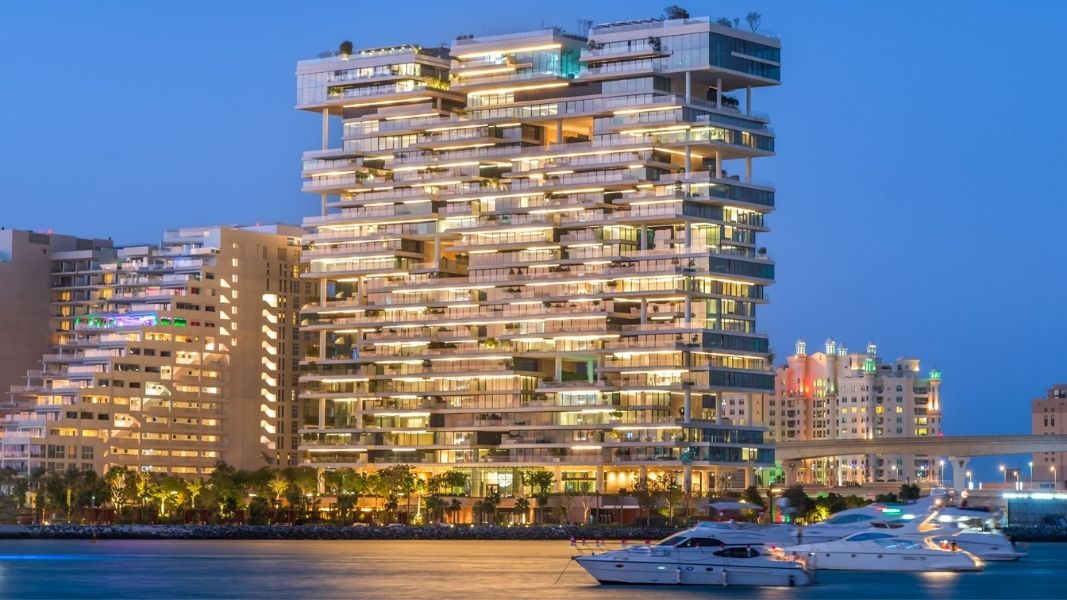
Is Buying a Home in Dubai a Good Investment?
Investing in Dubai real estate—especially in Palm Jumeirah—can provide strong returns. The Dubai government grants freehold ownership to foreigners (Real Estate Law of 2002), and Palm Jumeirah is a fully freehold area, allowing foreigners to obtain 99-year or even perpetual property rights. Additionally, property purchases can qualify investors for long-term residency programs such as the 10-year Golden Visa. Low taxes, attractive rental yields, and a growing economy further enhance Dubai’s appeal. However, market factors such as supply-demand balance, construction activity, and global economic conditions also influence purchasing decisions.Requirements for Foreign Buyers
Dubai law permits foreigners to purchase property in designated freehold zones (Palm Jumeirah, Downtown, Dubai Marina, etc.). These areas allow full ownership without the need for UAE citizenship. During the buying process, purchasers must present a valid passport, a sale and purchase agreement, and residency documents if applicable. Banks typically offer mortgage financing of over 50% of the purchase price for foreign buyers. Investors should ensure that properties in Palm Jumeirah are officially registered as freehold and that all transactions are completed through the Dubai Land Department.Investment Returns in Dubai’s Real Estate Market
Dubai real estate stands out for its favorable rental returns and capital appreciation potential. Ultra-luxury villas on Palm Jumeirah typically offer around 6% annual rental yield. Across Dubai, apartment yields average 7–8%, while villas generally offer 5–6%. Prime beachfront villas on Palm Jumeirah can reach yields of up to 6%, with long-term capital appreciation averaging around 7.9% annually. The region’s limited land availability and strong demand help sustain long-term value growth.Quality of Life & Prestige on Palm Island
Palm Jumeirah is considered one of the world’s most prestigious residential destinations among the global elite. The island hosts 5-star hotels, famous restaurants (Nobu, Ossiano, etc.), and luxury beach clubs (Club Vista Mare, White Beach, etc.). Gated communities, boutique retail centers, and family-friendly amenities support a high standard of living. The Palm Jumeirah Monorail also connects the island easily to the mainland, enhancing accessibility. All these features contribute to the exceptional lifestyle quality on the island.Long-Term Capital Growth Potential
Property prices on Palm Jumeirah have shown consistent long-term growth. According to ValuStrat, villa values in Dubai’s most popular communities—including Palm Jumeirah—rose by more than 100% between 2020 and 2024. In the first five months of 2025 alone, Palm Jumeirah prices increased by 18.9%. Strong demand, limited land supply, and a reported shortage of 10,000 villas across Dubai further support continued upward pressure on prices. For long-term investors, Palm Jumeirah offers a rare combination of exclusivity and sustained capital growth.Dubai Palm Island Location & Regional Advantages
Where Is Palm Island?
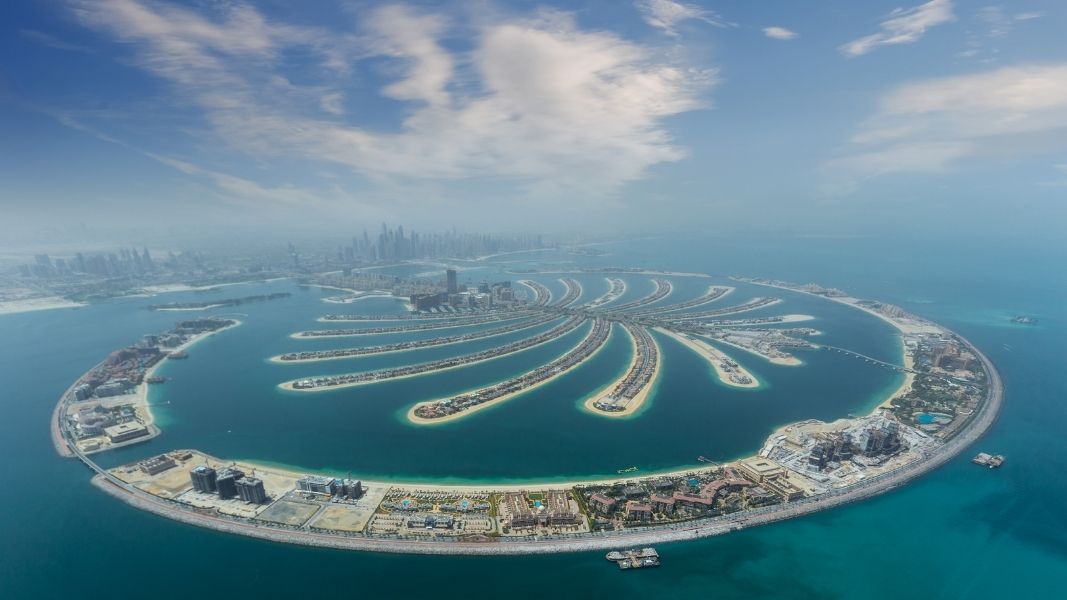
Nearby Areas & Transportation
The island is surrounded by key destinations such as Dubai Marina and Jumeirah Beach Residence (JBR) to the south, Jebel Ali to the northwest, and Downtown Dubai to the southeast. The Palm Monorail connects Atlantis The Palm to the Gateway Towers, linking the island to the Red Metro Line. Dubai International Airport is approximately 30 km away, while Al Maktoum International Airport is around 40 km from the island. Palm Jumeirah also offers easy access to surrounding areas by road and sea.Social Life, Dining & Beach Access
Palm Jumeirah provides high-quality social and recreational facilities. The island’s trunk and shoreline host a variety of luxury restaurants, cafés, and beach clubs. Popular venues include Club Vista Mare, Five Beach Club, Ossiano, and Nobu. Five-star hotels such as Atlantis The Palm and Waldorf Astoria offer spa and water sports facilities. The island’s private beaches provide a tranquil seaside experience for residents.Construction & History of Palm Island
How Was Dubai Palm Island Built?
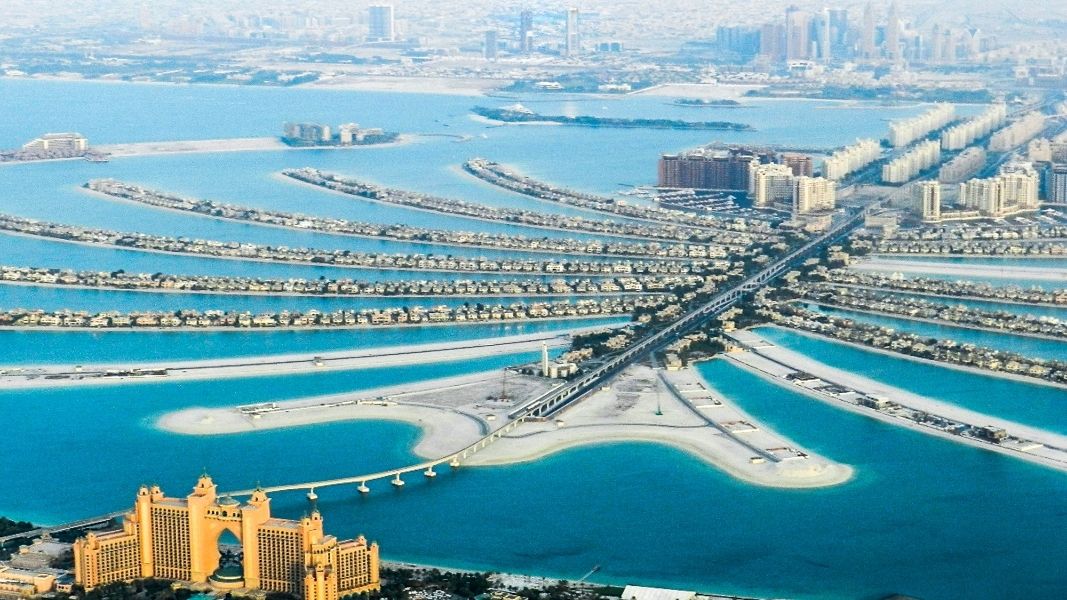 Palm Jumeirah was constructed through a joint effort by Dutch engineering firms Van Oord and Jan De Nul. The developer, Nakheel Properties (part of Dubai World), oversaw the project. Construction required 94 million cubic meters of dredged sand and 7 million tons of rock. The island’s 11 km long breakwater was reinforced with prefabricated concrete blocks. GPS-guided dredging machines shaped the coastline to form the palm tree trunk and fronds.
Palm Jumeirah was constructed through a joint effort by Dutch engineering firms Van Oord and Jan De Nul. The developer, Nakheel Properties (part of Dubai World), oversaw the project. Construction required 94 million cubic meters of dredged sand and 7 million tons of rock. The island’s 11 km long breakwater was reinforced with prefabricated concrete blocks. GPS-guided dredging machines shaped the coastline to form the palm tree trunk and fronds.


